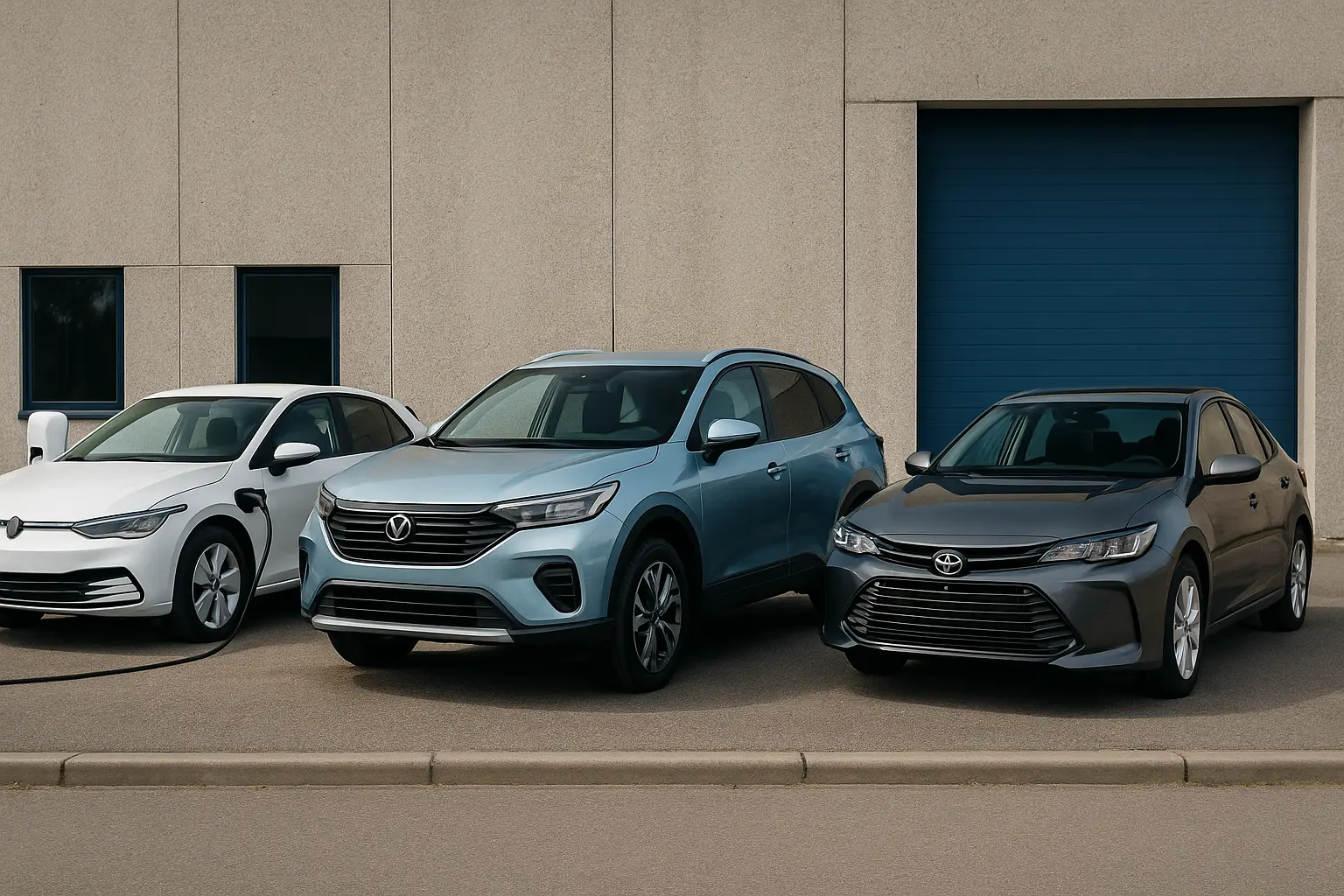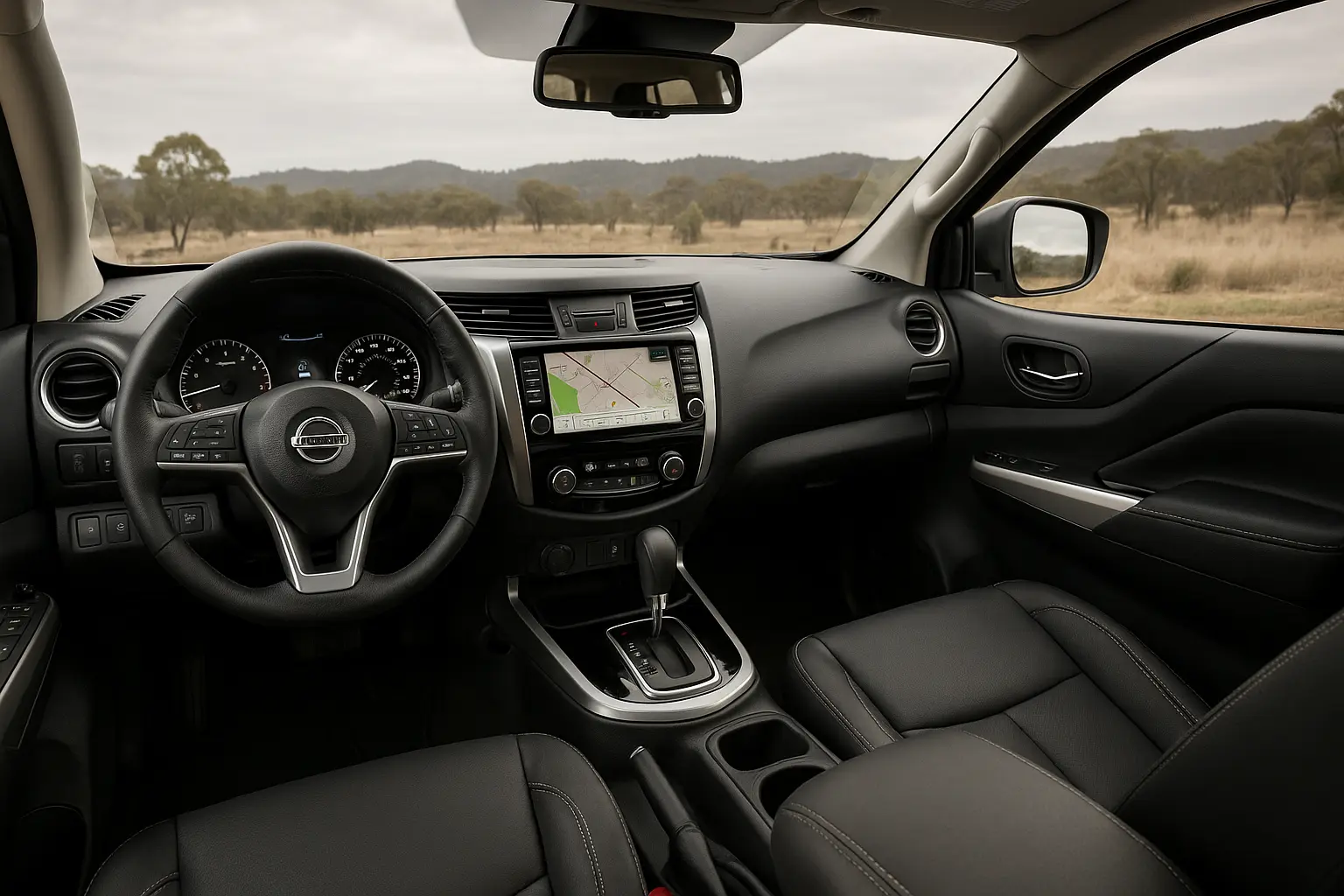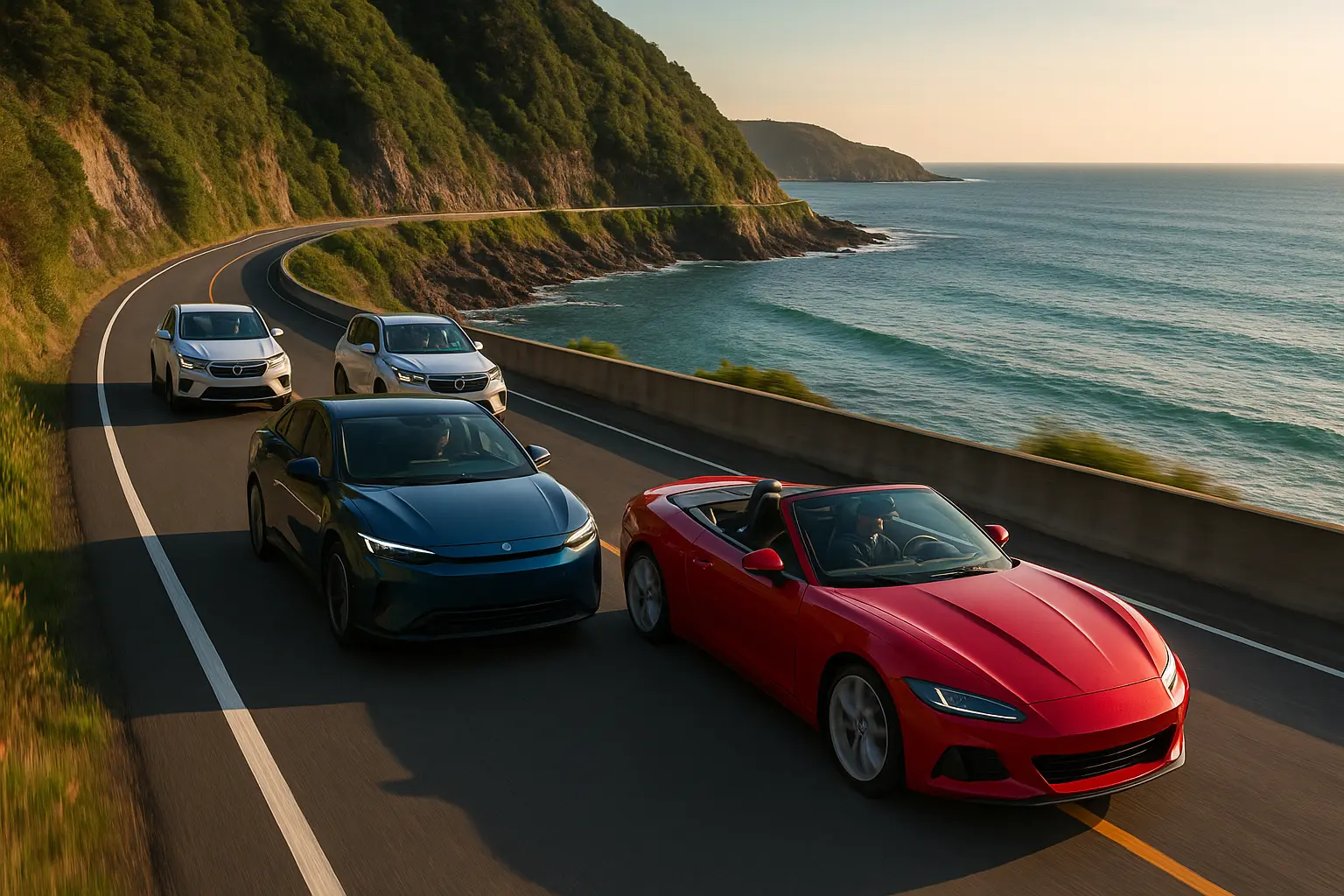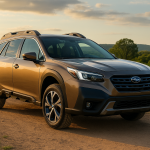🚗 Electric vs Plug-In Hybrid vs Hybrid – Explained for 2025 Buyers
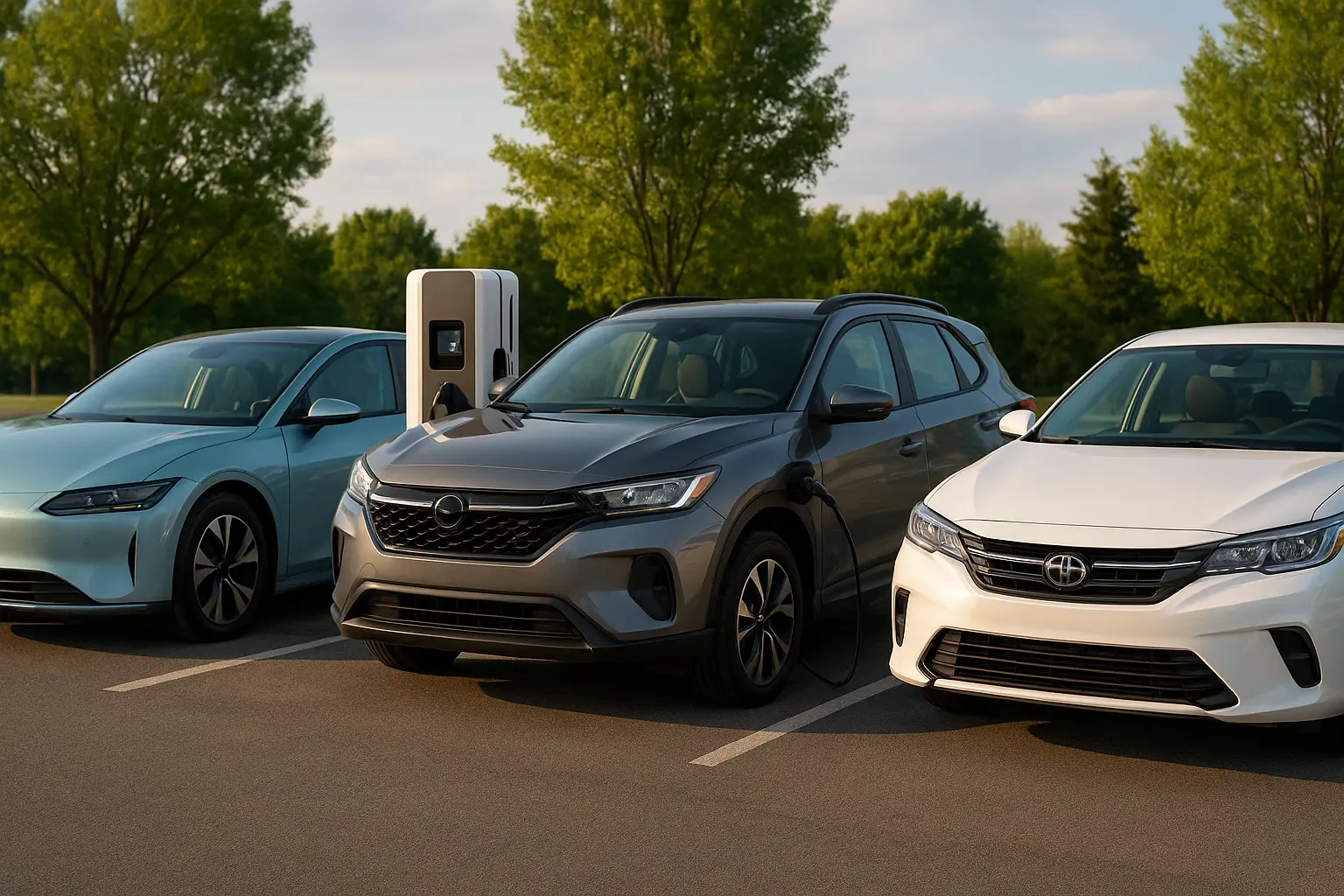
Introduction: The Green Car Revolution in 2025
In Australia, 2025 marks a major shift in automotive choices. Rising fuel prices, government incentives, emissions regulations, and growing environmental awareness have nudged more buyers toward greener options. But there’s a major question plaguing eco-conscious motorists:
Should you buy a hybrid, plug-in hybrid, or fully electric car?
This guide will unpack everything you need to know—how each works, costs involved, what to expect in daily driving, and which one fits your lifestyle best.
1. ⚡ What Is an Electric Vehicle (EV)?
Definition:
A fully electric vehicle runs only on electricity, using energy stored in a battery to power an electric motor. There’s no petrol engine involved.
Key Components:
Battery Pack (usually lithium-ion)
Electric Motor
Onboard Charger
Regenerative Braking System
Examples in Australia 2025:
Tesla Model Y
Hyundai Ioniq 6
Kia EV6
BYD Seal
Polestar 2
Pros:
✅ Zero emissions
✅ Cheaper to run (no petrol, fewer moving parts)
✅ Instant torque & smooth acceleration
✅ Quiet operation
✅ Eligible for government incentives (e.g. stamp duty waivers, EV rebates)
Cons:
❌ Higher upfront cost
❌ Limited charging infrastructure in rural/outback regions
❌ Charging time varies (esp. on slower AC chargers)
❌ Battery degradation (though tech is improving)
2. 🔄 What Is a Hybrid Car?
Definition:
A hybrid combines a petrol engine with an electric motor, but the car can’t be plugged in. Instead, the battery charges itself through braking and the engine.
Key Components:
Internal Combustion Engine (ICE)
Small Electric Motor
Battery (self-charging)
Hybrid System Controller
Examples in Australia 2025:
Toyota Corolla Hybrid
Honda ZR-V Hybrid
Subaru Forester Hybrid
Lexus NX 350h
Pros:
✅ No need to charge
✅ Better fuel efficiency than petrol-only cars
✅ Lower CO₂ emissions
✅ Proven reliability (especially Toyota hybrids)
Cons:
❌ Can’t run purely on electric at high speeds
❌ Smaller battery = limited electric driving
❌ Not as efficient as EVs or plug-in hybrids
❌ Still dependent on petrol
3. 🔌 What Is a Plug-In Hybrid (PHEV)?
Definition:
A plug-in hybrid offers the best of both worlds: a petrol engine + a larger electric battery that you can charge externally. You can often drive 30–100 km on electric alone.
Key Components:
Larger Battery Pack
Electric Motor
Combustion Engine
Plug-in Charging Port
Examples in Australia 2025:
Mitsubishi Outlander PHEV
Kia Sorento PHEV
MG HS PHEV
Volvo XC60 Recharge
Pros:
✅ Short trips = electric only
✅ Petrol backup removes range anxiety
✅ Lower emissions & running cost if regularly charged
✅ Eligible for some green incentives
Cons:
❌ Heavier than hybrids
❌ More expensive upfront than traditional hybrids
❌ Needs regular charging to maximise benefits
❌ Higher servicing complexity than EVs
4. 🔍 Side-by-Side Comparison Table
| Feature | EV | Hybrid | Plug-In Hybrid (PHEV) |
|---|---|---|---|
| Fuel Type | Electricity only | Petrol + regen battery | Petrol + electricity |
| Charging Required | Yes | No | Yes |
| Pure EV Range | 300–600+ km | 1–2 km (low speeds) | 30–100 km |
| CO₂ Emissions | 0 | Medium | Low |
| Running Costs | Lowest | Medium | Low (if charged often) |
| Upfront Cost | Highest | Lowest | Mid-range |
| Long-Trip Suitability | Good (with fast charging) | Excellent | Excellent |
| Ideal For | Urban & eco drivers | Budget + fuel savers | Suburban families |
5. 💸 Cost of Ownership in 2025 Australia
Purchase Price Range:
EVs: $39,000–$110,000+
Hybrids: $30,000–$55,000
PHEVs: $45,000–$75,000
Running Costs (Per Year Average):
| Type | Electricity/Petrol | Servicing | Insurance | Registration |
|---|---|---|---|---|
| EV | $500 | $300 | $1,000 | Lower (in some states) |
| Hybrid | $1,000 | $400 | $1,100 | Standard |
| PHEV | $800–1,200 | $450 | $1,200 | Standard |
Note: EVs benefit from fewer moving parts, which reduces servicing needs significantly.
6. 🌏 Environmental Impact
CO₂ Emissions (g/km):
EVs: 0
Hybrid: 80–110
PHEV: 40–70 (if driven correctly)
Battery Disposal & Manufacturing:
EVs and PHEVs both rely on lithium-ion batteries.
Recycling programs in Australia are expanding to handle future waste.
Some manufacturers now use recycled cobalt, aluminium, and sustainable sourcing.
7. 🛠 Maintenance Differences
| Service Item | EV | Hybrid | PHEV |
|---|---|---|---|
| Engine Oil | ❌ | ✅ | ✅ |
| Timing Belt | ❌ | ✅ | ✅ |
| Transmission Fluid | Minimal/none | ✅ | ✅ |
| Battery Health | ✅ (monitored) | ✅ | ✅ |
| Brake Wear | Lower (regen) | Moderate | Moderate |
8. 🔋 Charging Times Explained
| Charging Type | EV (60 kWh) | PHEV (15 kWh) |
|---|---|---|
| Home AC (2.4kW) | 24–30 hrs | 6–8 hrs |
| Wallbox AC (7kW) | 8–10 hrs | 2–3 hrs |
| DC Fast Charging | 20–60 mins (80%) | Not supported by all PHEVs |
9. 🧩 Choosing What’s Best for You
Buy an EV if:
You live in the city/suburbs with access to home charging
You drive less than 300 km/day
You want zero emissions and lowest running costs
You qualify for EV incentives
Buy a Hybrid if:
You want better fuel economy without charging
You drive long distances frequently
You want a reliable, proven system
Your budget is tight
Buy a Plug-In Hybrid if:
You can charge at home
You want electric driving for short trips but petrol backup
You do a mix of city and highway travel
You’re not ready for a full EV yet
10. 🇦🇺 What’s Trending in Australia in 2025?
EV market share is now over 25% of new car sales
Government EV incentives extended in NSW, VIC & QLD
BYD, Tesla, and Kia dominate EV sales
PHEVs are gaining traction with family buyers
Toyota hybrids remain Australia’s top-selling green vehicles
11. 🚘 Final Thoughts: What Should Aussie Buyers Do in 2025?
Your ideal green car depends on your budget, driving patterns, and charging access. There’s no one-size-fits-all. The good news? Every option—hybrid, plug-in hybrid, and electric—offers better efficiency and lower emissions than a traditional petrol car.
Take a test drive. Do your maths. Check your state’s EV rebates.
Then choose a greener path that drives you forward.
Leave a comment
Your email address will not be published. Required fields are marked *


